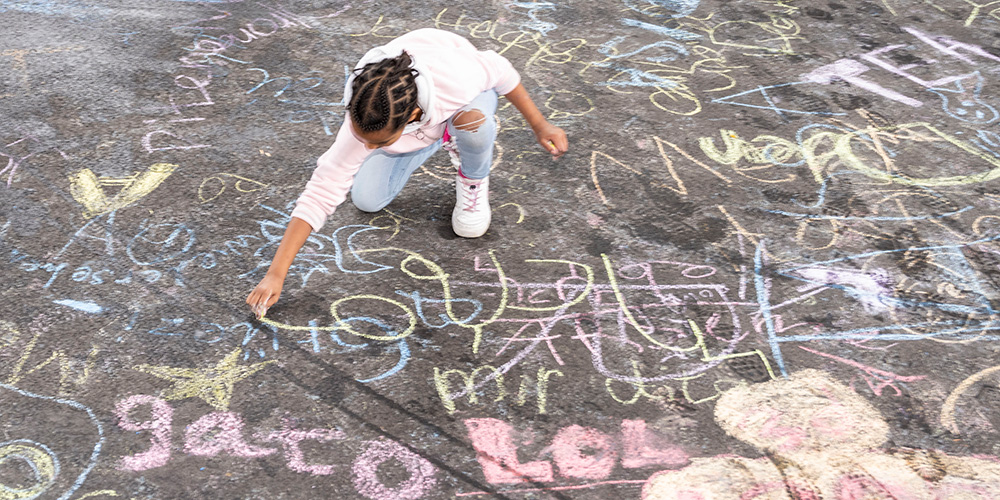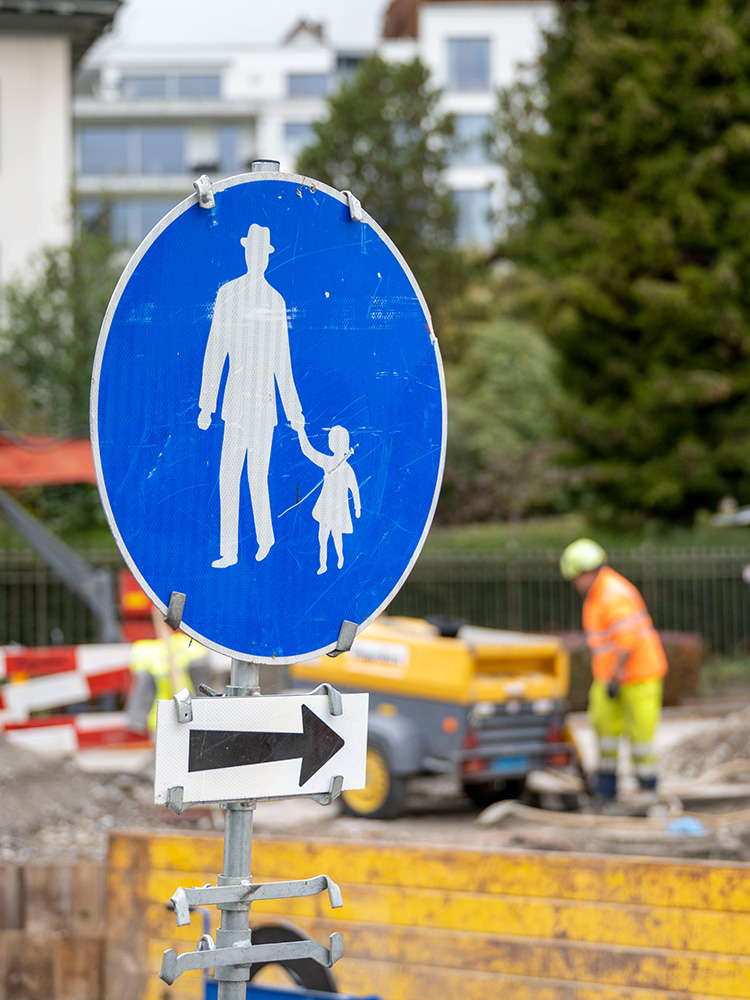The power of signs
Signs and symbols are intended to provide orientation in public spaces. Once we’ve understood their message, we take note of it and usually think no more of it. It’s worth taking a closer look, however, as these signs influence the way we live together. Edina Krompák and Stephan Meyer of the University of Basel aim to raise awareness of this aspect, especially in an educational context.
17 May 2022 | Noëmi Kern
Arrows indicate direction, symbols tell us which of the toilets are for ladies and which for men, and a stylized bicycle identifies the bike lane. We are constantly encountering direction and information signs, stickers, pictograms and graffiti in our everyday lives. Many of them combine language and images, while others use just one of the two. What they all have in common is that they convey information and help shape interactions. For this to succeed, though, the recipients must understand them in the way intended.
When it comes to understanding, the spatial and social contexts in which signs are used play an important role. The significance of a sign’s location and the idea behind it should not be underestimated. Many people from the Basel area, for example, will associate the color combination red and blue with FC Basel, while elsewhere this would probably not be the case.
“Language and space are inextricably linked – there is a mutual relationship between the two,” says Dr. Edina Krompák, educational researcher, language educationalist and lecturer at the University of Basel. The research field of “linguistic landscapes” looks at how and where signs are used in public spaces and what they mean, and asks questions about language use and policy. Changes in society influence the landscape of signs: diversity and multilingualism as a result of migration give rise to other modes of expression and language constellations. At the same time, historically influenced signs, for example, may no longer be understood or may be understood in a different way.
Learning to read the signs
“The signs in the linguistic landscape are part of a culture and society. Understanding them is like learning a new dimension of the language,” says Stephan Meyer, a research associate at the University of Basel’s Language Center. “Especially in view of today’s overload of visual stimuli, we have to learn to sharpen our perception and understand the effect of these signs,” adds the language educationalist and philosopher. He believes that this skill, this “visual literacy”, should be acquired by children along with reading and writing at school.
Stephan Meyer and Edina Krompák aim to raise and promote awareness of signs and how they are used in education. Together with Dr. Víctor Fernández-Mallat, linguist at Georgetown University in the US, they published the book Linguistic Landscapes and Educational Spaces. The book contains a collection of essays that address the meaning of signs in an educational context – in classrooms, in school hallways, in playgrounds, and in communication by the authorities.
“Researching the landscape of signs in an educational context provides valuable insights into the linguistic practices and overt – and less overt – language policies of the educational institutions studied,” says Edina Krompák. “Studying signs is also a suitable didactic resource when it comes to language learning, democracy education and promoting visual literacy.”
A sightseeing tour with a difference
According to Krompák, however, the methodology of “linguistic landscapes” is still being neglected in educational science. In response, the lecturer in educational science therefore offers both a theoretical and practice-oriented examination of this complex and dynamic field of research in her course.
Students explore the sign landscape of a neighborhood during a tour of discovery, and develop didactic approaches to applying the elements of the linguistic landscape in the classroom. “A class of schoolchildren can, for example, look for multilingual signs in the town and then analyze them and gain insights into the role and importance of linguistic diversity in the public space concerned,” Krompák explains.
At the same time, “schoolscapes”, i.e. the linguistic landscape of educational establishments such as daycare centers, kindergartens, schools and universities, are themselves shaped by the signs that govern everyday school life. Nevertheless, these should not simply be taken as a given.
Questioning symbols
The signs chosen can either reinforce or dilute stereotypes and power structures; they appeal to some people, while others may feel excluded. It is important, therefore, to question the symbolism that is used, for example, to identify girls’ and boys’ restrooms: With male and female pictograms? Biological symbols? Written words? And if so, which ones?
Whether and how signs are understood ultimately depends as much on their producers as on their viewers, and this dynamic interplay should be taken into account. “Anyone who uses signs in public spaces should therefore be aware of how they work,” says Stephan Meyer.
Original publication
Linguistic Landscapes and Educational Spaces (2021). Edited by Edina Krompák, Víctor Fernández-Mallat and Stephan Meyer. Published by Multilingual Matters, a publisher specializing in multilingualism.
The first part of the book analyzes signs in educational contexts, and the second part considers the use of signs in language learning.




